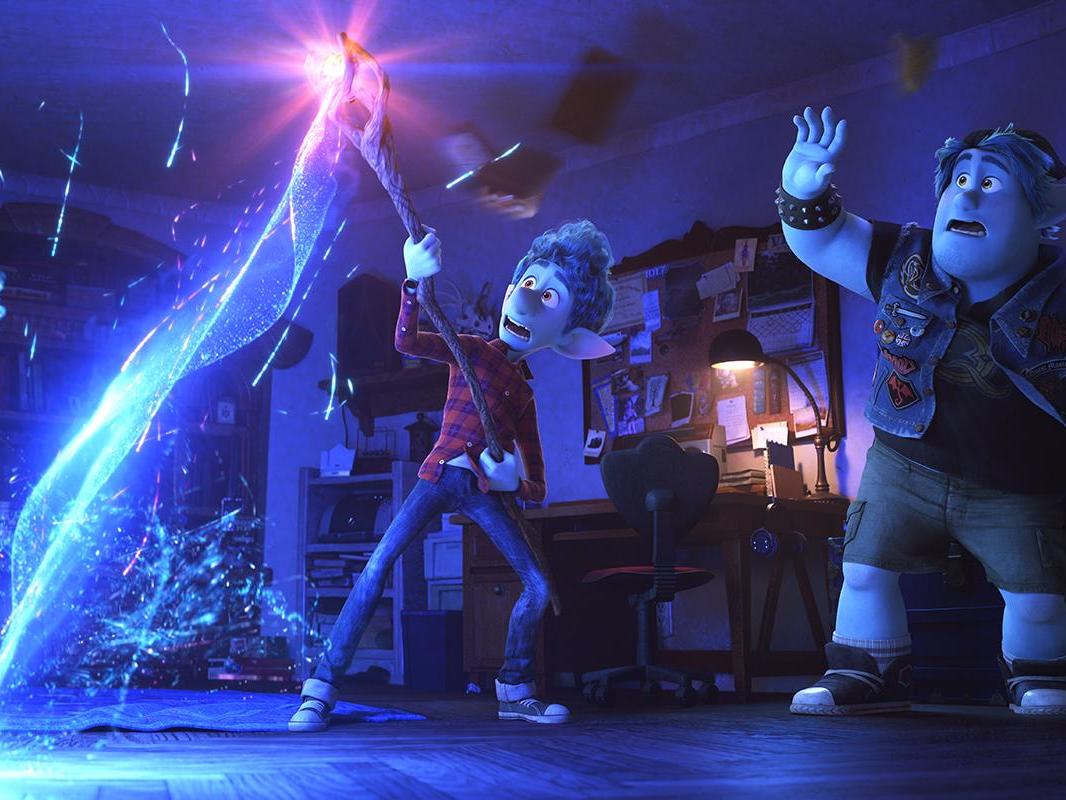Disney’s ‘Onward’ isn’t Frozen for boys – adults need to stop projecting gender norms onto kids
Despite what some money-hungry marketing teams tell us, children like what they like. They should be free to do so without having to succumb to societal biases, writes Matthew Jenkin


There’s a long-held belief in Hollywood that there isn’t a market for female-led superhero movies. Why? Because it’s presumed only boys want to watch modern-day knights in spandex save the world. It’s claimed Marvel boss Kevin Feige almost quit over Disney’s reluctance to diversify the Avengers franchise. So when last year’s Captain Marvel, starring Oscar-winning Brie Larsson in the titular role, smashed box office records, the Mouse House sat up and listened.
The studio has now green-lit a raft of blockbusters featuring female and LGBT+ characters, kicking off with Scarlett Johansson’s first solo outing as Black Widow in May 2020. It’s fantastic news, of course. But attitudes won’t change just because of greater representation. It’s about educating audiences that these movies are for them after all. And that should start at a very young age.
The rub is, the monster under the bed that is marketing doesn’t like equality – it likes customers it can compartmentalise and sell to. It likes boys and girls, cars and unicorns, supermen and princesses. So powerful is this consumerist machine that when Disney Pixar’s latest animated adventure, Onward, was released on Friday, some reviewers instinctively labelled the tale of two elf brothers as Frozen, but for boys.
Parents were quick to vent their anger on social media – and rightly so. Not because Frozen’s story of sisterly love isn’t empowering for girls, it’s again the presumption that boys are not interested in watching TV or films with strong female leads. And that in turn, little girls aren’t interested in a story about boys on a magical quest. But it’s an easy mistake for naive film critics to make. From branded bags and pencil cases to cups and of course clothes, Elsa is as omnipotent in the children’s section of shops and department stores as Peppa Pig. And in all but the few enlightened shops that don’t separate products by gender, she’s sold exclusively in the girls’ section.
The consequence is that no matter how much parents rail against the gendering of children’s toys and, let’s face it, everything else in their lives, the all-pervasive and powerful rhetoric that boys and girls must pursue different, clearly-defined interests always seems to win the day.
I’ve seen this happen first hand to my daughter, now three. From birth, we have made a conscious effort to expose her to a variety of toys and activities. For her second Christmas, she asked Santa for a remote control car, her favourite colour has always been red, and she loves climbing, running and getting mucky in the park.
Then suddenly she changed. She started to form stronger friendships with other girls at nursery and along with that came an obsession with princesses, rainbows and being “pretty”. Yes, there’s nothing wrong with make-believe, but she’s learning from her peers, carers, adult role models and the world outside of the home that being a girl means being passive and subservient to men. She has told me several times that girls can only be nurses and, after seeing me train for an upcoming marathon, asked whether girls are allowed to run as well.
It may seem trivial but developmental psychologists and sociologists agree that this type of gender segregation at such a young age can have lasting implications. Both boys and girls are missing out on learning important skills if they are pushed down one narrow path rather than allowed to explore. For example, while dolls are good for teaching children language skills, Lego and puzzles teach the spatial awareness skills needed to excel in subjects such as maths and science.
Research has also shown that between ages three to five, gender is very important to children. They notice shopping aisles divided by gender and are also much more influenced by their peers’ interests and choices than before. By age five, children become more flexible with the types of toys they will play with, but nobody seems to have told retailers that, who continue to separate products by gender.
Fortunately, parents and campaign groups such as Let Toys Be Toys are fighting back. After all, it hasn’t always been this way. During the 1970s, advertisements showed little gender distinction. It wasn’t until the 1980s and 1990s that marketeers began drawing a line between boys’ and girls’ toys. For once, it’s time to turn back the clock and go back to an era when toys were just toys.
Sadly, like many parents, my husband and I still feel helpless against a force that seems greater than any individual. All we can do is reinforce our message that our daughter can and should aspire to be whoever and whatever she wants in life.
Now we have an 18-month-old son and are even more conscious of the divide and the importance to allow him to also explore without our bias or preconceived ideas of gender (unconscious or not) influencing his choice of toys or activity. Yes, he likes the stereotypical boy games such as building and kicking a ball, but he also loves kissing and cuddling teddies and dolls.
When his sister belts out “Let It Go” in the kitchen, he now joins in. Because despite what some money-hungry marketing team tells us, there is no such thing as a movie for boys and girls. We can all enjoy the adventure together – whether it’s pink, blue or rainbow coloured.
Join our commenting forum
Join thought-provoking conversations, follow other Independent readers and see their replies
Comments